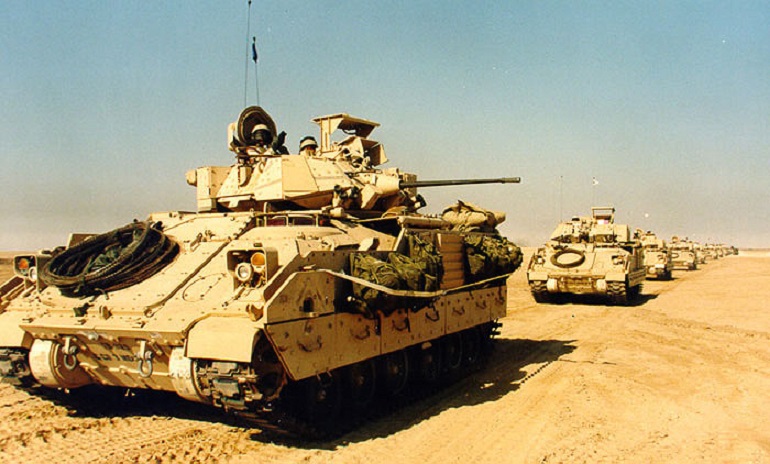This post is also available in:
 עברית (Hebrew)
עברית (Hebrew)
For the past decades, protection for ground-based armored combat vehicles and their occupants meant more armor. However, the trend of increasingly heavy, less mobile and more expensive combat platforms has limited soldiers’ and Marines’ ability to rapidly deploy and maneuver in theater and accomplish their missions, leading the U.S. military to investigate revolutionary ground-vehicle technologies that would simultaneously improve the mobility and survivability of vehicles, according to darpa.mil.
A new augmented and virtual reality solution by Honeywell could help soldiers in combat vehicles on the battlefield. An augmented and virtual reality headset along with a wraparound display successfully allowed operators of a windowless vehicle to effectively see what was around them. This is the first case where a natural viewing experience has been achieved in an indirect, windowless driving system.
Honeywell has successfully completed research and testing of a virtual window technology as part of the Defense Advanced Research Projects Agency (DARPA) Ground X-Vehicle Technologies program.
“We leveraged our expertise in high-speed graphics processing, human factors design and display systems to create a virtual landscape that enables driving a windowless vehicle over actual terrain at operationally realistic speeds,” said Brian Aleksa, senior technical manager, Research & Development, Honeywell Aerospace. “After bringing a smart design to life with real-world testing, we’ve developed a windowless display that overcomes traditional challenges associated with motion sickness and eye strain. Our solution proves that a safer closed-cockpit experience is possible. There is plenty of future growth and potential application for this technology in both military and commercial markets.”
According to prnewswire.com, the first phase of the GXV-T program began in July 2015, with Honeywell experimenting with the concept and possibility of a windowless land vehicle. Drivers tested their performance using an augmented and virtual reality headset and panoramic active window displays. After successful initial testing, DARPA continued its contract with Honeywell, which successfully tested virtual window systems by driving a fully enclosed vehicle on a rugged, off-road desert course. As part of the test, professional drivers maneuvered through the track at speeds of more than 35 miles per hour. They drove the windowless vehicle using 160-degree “battlefield” views through the virtual window display.
By reimagining how a driver interacts with the outside world, future systems based on GXV-T research could enable an entirely new way of driving. Vehicle operators could eventually be given a full 360-degree view of their surroundings, which would allow them to use new methods and strategies to stay protected from external threats.
These future systems could also provide operators with more information about their mission, such as optimal routes, difficult terrain or troop movements by augmenting what they are seeing. The virtual reality technology would also be useful in training or simulation environments.


























